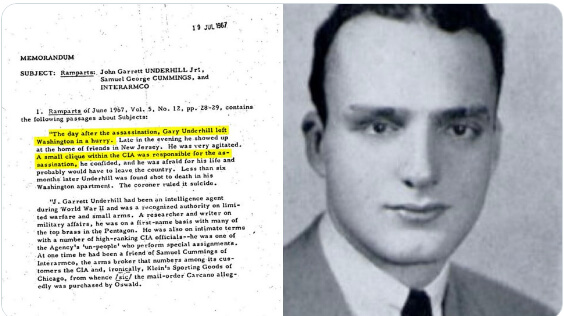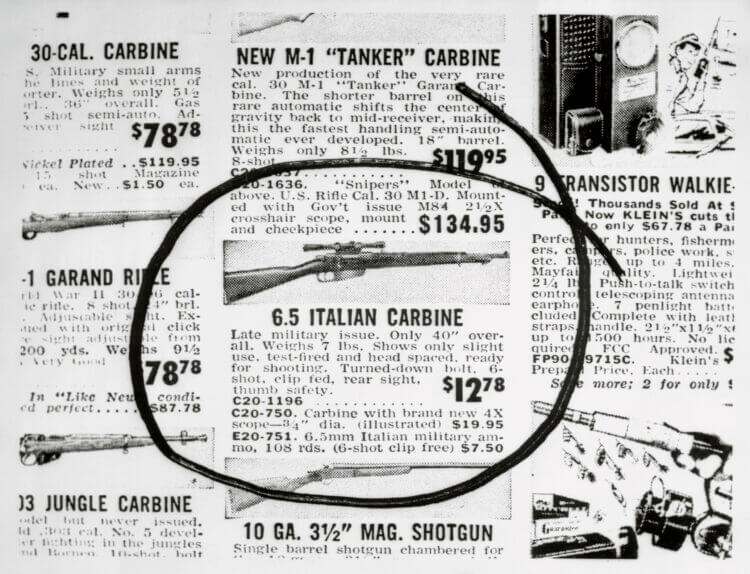

A newly released CIA memo from the JFK files concerns a well-connected intelligence agent who believed the Agency was behind the assassination of President John F. Kennedy and who wound up dead less than six months later. The subject of the memo was a June 1967 article in Ramparts Magazine that discussed “Subjects” John Garrett Underhill, Samuel George Cummings, and Interarmco, an American small arms dealer owned by Cummings. The memo was marked “SECRET RYBAT,” denoting the high level of secrecy required to protect the message.
According to the Ramparts article, the CIA owned Interarms before Cummings officially bought it in 1958 and Agent “Gary” Underhill believed it was linked to the murder. Cummings, according to the article, sold arms to the CIA and to “Klein’s Sporting Goods of Chicago, from whence the mail order Carcano [rifle] allegedly was purchased by Oswald.”
Ramparts revealed that the day after the assassination, Underhill left Washington D.C. “in a hurry” and traveled to New Jersey where he told his friends that “a small clique” within the CIA was responsible for the assassination.
Underhill reportedly believed that the clique was operating a “lucrative racket in gun-running, narcotics, and other contraband, and manipulating political intrigue to serve its own ends.”
President Kennedy, according to the article, “supposedly got wind that something was going on and was killed before he could blow the whistle on it.”
Underhill had reportedly been an intelligence officer during World War II and was an authority on limited warfare and small arms. The agent, according to Ramparts, had been “on a first-name basis with many of the top brass at the Pentagon” and “on intimate terms with with a number of high-ranking CIA officials.” The magazine described Underhill’s status at the CIA as “one of the Agency’s ‘unpeople’ who perform special assignments.”
Underhill’s New Jersey friends, who were interviewed by Ramparts, described the agent as “very agitated” and “badly shook” when he visited them after JFK’s assassination. They said Underhill told them he was “afraid for his life” and would “probably have to leave the United States.”
Less than six months later, on May 8, 1964, Underhill was found dead with a bullet to the left side of his head. The coroner ruled the death a suicide.
Asher Brynes, a writer for the New Republic, found Underhill’s body, according to the article, and found it “odd” that the agent was shot behind his left ear when he is right handed. Brynes also believed the pistol had been fitted with a silencer because none of the other occupants in the apartment building could recall hearing a shot fired. Underhill had been dead for several days when he was found.
While Underhill’s story is not new, the memo indicates that the CIA kept a highly classified file on his allegations.
Director of National Intelligence Tulsi Gabbard posted on X Tuesday: “President Trump is ushering in a new era of maximum transparency. Today, per his direction, previously redacted JFK Assassination Files are being released to the public with no redactions. Promises made, promises kept.”


